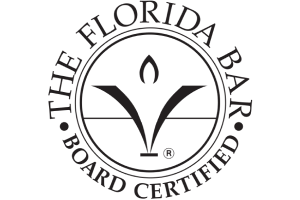The Effects on Voting Laws after the Shelby v Holder Supreme Court Ruling – 11
Supreme Court Oral Argument Highlights and Excerpts (continued)
Justice Alito was next to speak, saying that “Section 5 activity may show that there’s a problem in the jurisdictions covered by Section 5, but it says nothing about the presence or absence of similar problems in noncovered jurisdictions.” He then asked Mr. Adegbile if he concurred; which he answered with “Absolutely”
With that Mr. Adegbile began to bring forth evidence about Section 2’s known statistics which he stated has national application. He then asserted that the evidence in this case confirms that the concentration of Section 2 attainments in the covered jurisdictions is markedly more. He pointed out that these statistics were offered before Congress. He went on to a degree to quote Justice Kagan’s observation, and somewhat paraphrased, reiterating that adjusting the results taking population data into consideration, it was four times as much of the amount suggested. As another “piece of evidence,” he then referred to Peyton McCrary, a Historian with the Civil Rights Division of the United States Department of Justice, who looked into all of the Section 2 cases and subsequently wrote the paper “The End of Preclearance as We Knew It: How the Supreme Court Transformed Section 5 of the Voting Rights Act” in 2007. He continued by stating what McCrary shows “is that the directional sense” is what Ellen Katz, a law professor at the University of Michigan asserted when she wrote the paper “Documenting Discrimination in Voting: Judicial Findings Under Section 2 of the Voting Rights Act Since 1982” pointing to its dramatic understatement of the disparity under Section 2.
His monologue was cut short when Justice Scalia interjected with the question “Do you think all of the noncovered States are worse in that regard than the nine covered States, is that correct?” to which Mr. Adegbile answered: “Justice Scalia, it’s… it’s a fair question, and… and I was speaking to the aggregate,” (uncompleted). Scalia continued by saying “It’s not just a fair one, it’s the crucial question. Congress has selected these nine States. Now, is there some good reason for selecting these nine?” After a brief hesitation Adegbile began to answer his question by basically saying that the evidence shows that out of the uppermost eight states with positive Section 2 results, seven were jurisdictions covered by preclearance. Due to this fact it is the Respondent’s assessment “that this is not a fixed statute”… The speech was not finished as Justice Breyer broke in and said “Yes, but his point…” and then continued drawing comparisons between the covered states and those not covered. He presumed that it was possible that at least some of those covered states may have a better record than some of the states that are not. He then went on to say that in 1965 when the Act was first put into effect there was a justification to go with. Referring to one of the gauges of it, he said “we have history”. He cited “200 years or perhaps of slavery,” as well as: “80 years or so of legal segregation.” He then agreed that this statute has been in effect for forty-one years and it’s “helped, a lot” but balanced the point by saying that Congress could have easily made the assumption in 2005 not to do anything but reaffirm it, as long as the statute was working and the Country still has further to go before it would no longer be needed as originally written and amended.
He then rationalized if it was necessary to continue the statute as Congress had, making mention that it was “aimed at States” and was intended to contrarily treat the targeted States. In the midst of this oration he proposed stating the obvious by saying “What do you think the Civil War was about?” summing up that “of course it was aimed at treating some States differently than others.” Continuing his monologue he probed Mr. Adegbile with the question if a time would come when the edict would “run out” and will there be a specific time when that happens as well as asking what the standard for that occurrence would be? With completion of the concept he requested that Mr. Adegbile address it.
To continue reading Supreme Court Oral Argument Highlights and Excerpts (9),
click here to go to page 12




